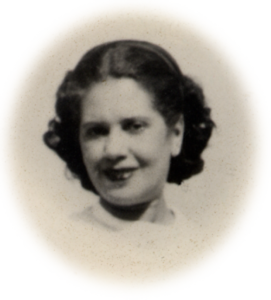
Hilda Wilkinson Brown
*The birth of Hilda Wilkinson Brown is celebrated on this date in 1894. She was a Black artist and teacher.
Hilda Rue Wilkinson was born in Washington, D.C., and was the only one of five grandchildren to have remained in Washington, D.C., where her great-grandmother first moved after being freed from slavery in 1835. Brown graduated high school from Miner Normal School, later renamed Miner Teacher's College, and absorbed by the University of the District of Columbia. She earned her Bachelor's in Education at Howard University and her master’s from Columbia University. She also studied at Cooper Union, The National Academy of Design, and the Art Students League in New York City.
1923, after graduating from Cooper Union in New York City, Brown started her first teaching job at Miner Normal School. She coordinated a two-year art history, design, and fine arts curriculum there and eventually chaired the department. In the 1920s, she worked as a commercial illustrator for The Brownies' Book, a magazine for Black children edited by W.E.B. DuBois and Jesse Redmond. Brown and Lucille Rogers designed the June 1920 cover of The Crisis. 1929, she integrated fine arts and industrial arts into the school's teacher training program.
That same year, she married a physician named Schley Brown, and in 1937, the two purchased a brownstone in LeDroit Park. This neighborhood would become the subject of many of Brown's paintings. Because of its proximity to local schools, LeDroit Park attracted black educators and scholars, fostering a community of intellectuals. One such community member was the writer Langston Hughes; although he left before Brown moved to the neighborhood, she was acquainted with his family. According to her niece, Brown had learned how to sculpt and make pottery when she attended Columbia University and would gift these objects to friends or use them to decorate her home. A sociable woman, Brown was also a member of the Coo Coos, a local chapter of the social organization The Girl Friends, a social club for black women.
The couple did not have children but were close to Hilda's maternal niece, artist Lilian Thomas Burwell. Schley Brown was named Burwell's godfather when he and Hilda married. She spent summers at her second home in Oak Bluffs, Martha's Vineyard, until 1980. At the time, Oak Bluffs was a popular vacation destination among upper- and middle-class blacks, making Brown a part of this local community and the one in LeDroit Park. She enjoyed gardening and making pottery and clay sculptures. From 1932 until her retirement in 1961, Brown created set and costume designs for the school's theater productions and graphics for the school and designed its seal. She was an assistant professor at the time of her retirement.
While invested in Miner Normal School, Brown worked with public schools throughout Washington, D.C. In 1933 she introduced the "modern" approach to art education in segregated Negro schools, which championed individual creativity rather than the mimetic approach to teaching art that was usually taught. She lectured at Howard University and other schools throughout Washington D.C. on African art heritage, art in interior design, and art education for elementary school teachers.
Brown felt women's domestic responsibilities prevented them from making art as full-heartedly and self-centered as male artists. She recognized the limitations this posed to her and other female artists' chances of recognition; she was passionate about domestic work and teaching and was unwilling to compromise these passions to advance her artistic career. In 1940 she made six linoleum block prints for the first edition of E. Franklin Frazier's book The Negro Family in the United States. The author, her brother-in-law, wrote in her copy that her work "made evident what (he) tried to write." Brown kept only a small number of lithographs and sketches, most of which are artists' proofs. The graphite drawing Oak Bluffs in the Art Institute of Chicago and the lithograph The Family in the Metropolitan Museum of Art collection are rare in that they survive, and most of her pieces are undated and unsigned. A painting titled Third Street was found behind a furnace in Brown's basement after her death.
This seeming disregard for her art attests to her high standards and the fact that she was not seeking recognition as an artist. Although Brown's paintings indicate talent, Burwell has suggested that Brown may have seen art-making as a mere hobby. Brown's oil paintings reflect an interest in the community and familiar settings around her. She painted still lives, portraits, and neighborhood scenes within LeDroit Park.
During her summers in Martha's Vineyard, the artist painted local landscapes in watercolor. Even her artistic production reflects her passion for education. In a review of her exhibition at Howard University Gallery, Paul Richard of the Washington Post said, "hers are images that teach." Curator of the National Museum of American Art Merry Forester wrote that Brown "grappled with the problems of Fauvism, Cubism, and Expressionism," reflected the influence of Realism, Precisionism, and Conceptualism, and that "she worked in a style that only a few in her time were courageous enough to use."
At the end of her life, she became legally blind and bedridden. Hilda Rue Wilkinson Brown, an educator, prolific artist, and printmaker, died of congestive heart failure in 1981 at the age of 86 in her home in Washington, D.C.